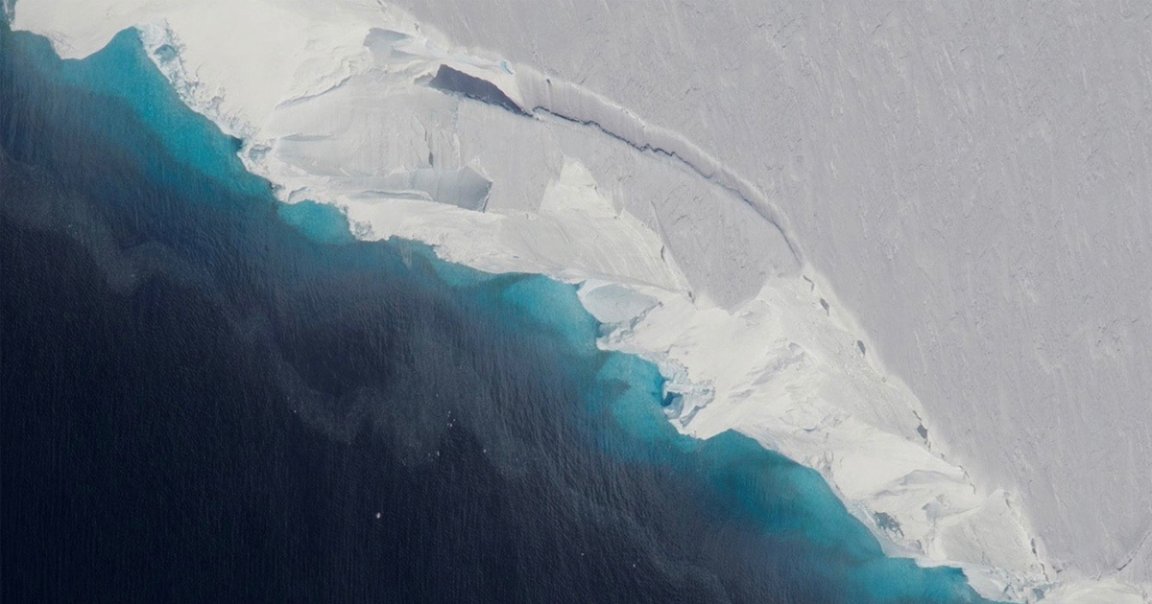
Thwaiting Period
The Thwaites Glacier in Antarctica is called the “Doomsday Glacier” for a reason.
Larger than the state of Florida, the icy mass contains so much water that scientists predict that its melting could single-handedly raise global sea levels by over two feet — and possibly over five times more that, if it triggers a broader collapse of the Antarctic Ice Sheet.
Two major studies this year have only heated up the debate around the glacier’s future, as highlighted in an article from Columbia University’s GlacierHub.
While their conclusions differ on how quickly the Thwaites will melt, there is a consensus that it will eventually fully disappear, leaving the door open to ambitious, large-scale geoengineering projects, such as building an enormous barrier to keep out warm water, as being worth seriously considering.
They may be desperate measures, but we need to start exploring them now, according to John Moore, a professor with the Arctic Center at the University of Lapland.
“It will take 15 to 30 years for us to understand enough to recommend or rule out any interventions,” he told GlacierHub.
Meltdown Breakdown
A study published in May suggested that the Doomsday Glacier was more vulnerable to warming than once believed.
Using extensive satellite imaging, the researchers discovered that high tides are intermittently lifting the Thwaites by a few centimeters, exposing its underbelly that would otherwise be protected by the seafloor.
With this opening, warm seawater forces its way beneath the glacier, causing what the scientists dubbed “vigorous melting”: the intruding seawater dilutes the melting freshwater with salt, lowering the solution’s melting point and exacerbating the melt.
The study predicted that the glacier could fully disappear by 2100. However, another paper published in August argued that this is unlikely, instead projecting that the glacier’s complete collapse will take place in the centuries following that.
Nonetheless, researchers agreed that Thwaites’ rapid retreat would continue to accelerate, as it has been for the past thirty years.
All Bets Off
Scientists fear that if the Thwaites disappears, it could trigger a collapse of the entire West Antarctic ice sheet (WAIS), potentially raising sea levels by over ten feet. As it stands, the Doomsday glacier already contributes to about four percent of rising levels on Earth.
Barring an immediate societal shift away from burning fossil fuels, we might want to try a technological solution to slow the melt. One idea scientists have proposed is surrounding Thwaites and other vulnerable glaciers with huge, 62-mile-long curtains to block the warm ocean water. Far-fetched, perhaps, but there is serious research into this underway.
“For some polar tipping points like Arctic sea ice and the WAIS, glacial geoengineering seems to be the only way for us to more or less guarantee that we can address these tipping points,” Gernot Wagner, a climate economist at Columbia Climate School told GlacierHub.
Geoengineering projects, though, tend to catch flak for distracting from the real solution of eliminating carbon emissions. Which is why Wagner emphasizes that, “when we talk about glacial geoengineering, we need to tell the truth, which is that it’s not a solution to climate change — at best, it’s a painkiller.”
More on climate change: As Trump Prepares to Slash Environmental Protections, 48 of the 50 States Are Facing Droughts